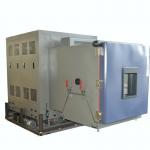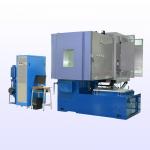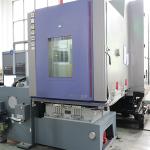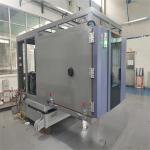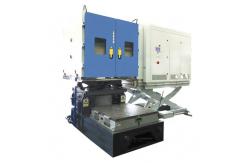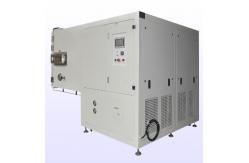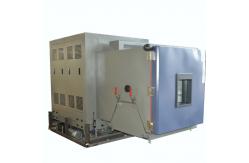In the realm of sensor and instrument manufacturing, ensuring the
reliability and performance of these devices is crucial. The
combination of a Random Vibration Test Machine and a humidity and
temperature chamber offers a comprehensive testing solution
tailored to the unique requirements of sensors and instruments.
This integrated system allows manufacturers to subject their
products to a wide range of mechanical vibrations and environmental
conditions, replicating the challenging scenarios they may
encounter during their lifespan. This advanced testing setup is specifically designed for sensors
and instruments used in various industries, such as automotive,
aerospace, healthcare, and environmental monitoring. These can
include pressure sensors, temperature sensors, accelerometers,
spectrometers, and many other types of measuring devices. The
primary purpose of this combined system is to evaluate how these
sensors and instruments perform and endure under the combined
effects of random mechanical vibrations and different humidity and
temperature conditions. By simulating real - world situations like the vibrations during
transportation, the temperature variations in different operating
environments, and the humidity changes in indoor and outdoor
settings, manufacturers can identify potential weaknesses in the
design, improve product quality, and ensure that the sensors and
instruments can provide accurate and reliable measurements in
diverse conditions. - Realistic Random Vibration Simulation
- The random vibration test machine is capable of generating a wide -
spectrum random vibration profile, typically covering a frequency
range from 2 Hz to 2000 Hz. This broad range enables the
replication of the complex and unpredictable vibration patterns
that sensors and instruments are likely to encounter in real -
world applications. The machine can precisely control the vibration
power spectral density (PSD), allowing for the accurate
reproduction of different levels of random vibration intensity.
- The random vibration generation is based on sophisticated
algorithms that mimic the actual vibration sources in various
industries. For example, in the automotive industry, sensors may
experience vibrations from the engine, suspension, and road
irregularities. The test machine can generate vibration profiles
that closely resemble these real - world vibrations, helping
manufacturers to identify potential issues related to component
failures, signal interference, or inaccurate measurements caused by
vibrations.
- Multi - Axis Vibration Capability
- It can generate vibrations in multiple axes, usually three - axis
(X, Y, and Z), which is essential for sensors and instruments as
they often experience vibrations from different directions
simultaneously. In an aircraft, for instance, sensors may be
subjected to vibrations in all three axes during flight due to
engine vibrations, air turbulence, and the movement of the
aircraft's structure. The multi - axis vibration capability of the
test machine allows for a more realistic simulation of these
complex mechanical stresses, enabling manufacturers to test the
performance of sensors and instruments under more representative
conditions.
|
